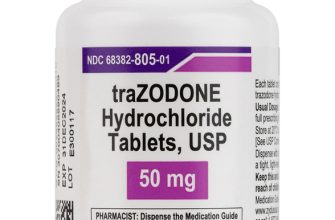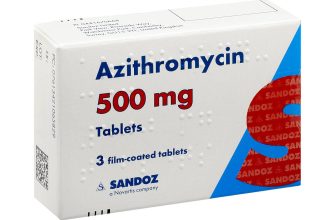No, ketorolac is not a narcotic. It’s a non-narcotic nonsteroidal anti-inflammatory drug (NSAID) frequently used for moderate to severe pain relief. Understanding this distinction is vital for safe and effective pain management.
Unlike narcotics, which act on opioid receptors in the brain to reduce pain perception, ketorolac works by inhibiting the production of prostaglandins – substances in the body that trigger inflammation and pain. This mechanism explains its anti-inflammatory effects alongside pain reduction.
While both narcotics and NSAIDs alleviate pain, they differ significantly in their side effect profiles and potential for dependence. Ketorolac carries a lower risk of addiction compared to narcotics. However, it’s crucial to consult a healthcare professional before using any pain medication, including ketorolac, to discuss potential risks and benefits based on your individual health condition.
Remember to always follow prescribed dosages and instructions provided by your doctor or pharmacist. Misuse can lead to adverse effects, highlighting the importance of responsible medication use. Seek immediate medical attention if you experience any concerning symptoms while taking ketorolac.
- Is Ketorolac a Narcotic?
- Ketorolac’s Chemical Classification and Mechanism of Action
- Comparing Ketorolac to Opioids: Key Differences in Effects and Risks
- Pain Relief Mechanisms
- Side Effects
- Addiction Potential
- Appropriate Use
- Interactions
- Summary: Key Differences
- Ketorolac’s Use in Pain Management: Indications and Limitations
- Potential for Abuse and Dependence with Ketorolac
- Factors Influencing Risk
- Monitoring and Prevention
- Understanding Ketorolac’s Interactions and Side Effects
Is Ketorolac a Narcotic?
No, ketorolac is not a narcotic. It’s a non-narcotic nonsteroidal anti-inflammatory drug (NSAID).
Ketorolac works by reducing inflammation and pain. Unlike narcotics, it doesn’t act on opioid receptors in the brain. This means it carries a lower risk of addiction and respiratory depression.
While effective for pain relief, ketorolac, like other NSAIDs, can have side effects, including stomach upset and increased risk of bleeding. Always follow your doctor’s instructions and discuss any concerns.
Remember to inform your doctor about all medications you are taking before starting ketorolac treatment, especially blood thinners. This ensures safe and effective pain management.
If you have questions about pain management or ketorolac, consult your physician or pharmacist for personalized advice. They can help you weigh the benefits and risks of this medication based on your specific health needs.
Ketorolac’s Chemical Classification and Mechanism of Action
Ketorolac belongs to the nonsteroidal anti-inflammatory drug (NSAID) class. Specifically, it’s a propionic acid derivative.
Its mechanism involves inhibiting cyclooxygenase (COX) enzymes, COX-1 and COX-2. This inhibition reduces the production of prostaglandins, inflammatory mediators responsible for pain and swelling. The preferential inhibition of COX-2 contributes to its anti-inflammatory effects, while COX-1 inhibition can lead to gastrointestinal side effects.
This targeted action makes ketorolac effective for managing moderate to severe pain. However, because of its potential side effects, careful consideration of patient history and close monitoring are needed during treatment.
Comparing Ketorolac to Opioids: Key Differences in Effects and Risks
Ketorolac is a non-narcotic NSAID (nonsteroidal anti-inflammatory drug), unlike opioids which are narcotic analgesics. This fundamental difference leads to significant variations in their effects and risks.
Pain Relief Mechanisms
Ketorolac reduces pain by inhibiting the production of prostaglandins, inflammatory chemicals contributing to pain and swelling. Opioids, conversely, work primarily by binding to opioid receptors in the brain and spinal cord, altering pain perception.
Side Effects
- Ketorolac: Common side effects include gastrointestinal upset (e.g., nausea, heartburn, ulcers), kidney problems, and increased bleeding risk. It doesn’t cause respiratory depression or severe constipation like opioids.
- Opioids: Side effects vary depending on the opioid but often include drowsiness, nausea, constipation, respiratory depression (slowed or shallow breathing – potentially life-threatening), and a high risk of addiction.
Addiction Potential
Ketorolac has no potential for addiction. Opioids, however, carry a significant risk of physical and psychological dependence, leading to addiction with prolonged use.
Appropriate Use
- Ketorolac: Suitable for short-term management of moderate to severe pain, typically post-surgical or post-traumatic pain. Its use should be limited due to potential kidney and gastrointestinal issues.
- Opioids: Reserved for moderate to severe pain unresponsive to other treatments, often used for chronic pain conditions under strict medical supervision. Due to the high risk of addiction, opioid use requires careful monitoring and adherence to prescribed dosages.
Interactions
- Ketorolac: Can interact with other NSAIDs, blood thinners, and certain diuretics. Always inform your doctor about all medications you are taking.
- Opioids: Interact with many drugs, including sedatives, alcohol, and other central nervous system depressants. This increases the risk of respiratory depression and overdose.
Summary: Key Differences
In short, Ketorolac offers pain relief without the risk of addiction or severe respiratory depression associated with opioids. However, it has its own set of risks, particularly affecting the gastrointestinal and renal systems, limiting its usage to short-term, moderate-to-severe pain management under medical supervision.
Ketorolac’s Use in Pain Management: Indications and Limitations
Ketorolac, a non-narcotic NSAID, effectively manages moderate to severe acute pain. Doctors frequently prescribe it for post-operative pain, pain from musculoskeletal injuries, and migraine headaches. Its rapid onset and relatively short half-life allow for targeted pain relief.
However, ketorolac’s use has restrictions. Its primary limitation is its potential for gastrointestinal side effects, including ulcers and bleeding. Patients with a history of gastrointestinal problems should use it cautiously, often requiring concurrent medication for gastrointestinal protection. Renal impairment also necessitates careful monitoring and potentially lower doses due to the drug’s excretion through the kidneys.
Furthermore, prolonged use of ketorolac increases the risk of serious cardiovascular events, such as heart attack or stroke. Doctors typically limit its use to five days to minimize this risk. Individuals with cardiovascular disease or risk factors should discuss the benefits and risks with their physician before taking ketorolac.
Allergic reactions, although uncommon, can occur. Patients with allergies to other NSAIDs should exercise extra caution. Specific instructions regarding dosage, duration of use, and potential interactions with other medications should always be followed meticulously as prescribed by a healthcare professional.
In summary, while ketorolac provides effective pain relief, its use requires careful consideration of patient-specific factors and potential adverse effects. Always consult a doctor before using ketorolac or any other medication.
Potential for Abuse and Dependence with Ketorolac
Ketorolac, while not a narcotic, carries a low risk of abuse and dependence. Its potential for misuse stems primarily from its analgesic properties, leading some individuals to seek it for non-medical purposes. However, this risk is significantly lower compared to opioids or other controlled substances. The FDA classifies ketorolac as a non-narcotic NSAID, reflecting its distinct pharmacological profile. Reports of ketorolac abuse are relatively rare.
Factors Influencing Risk
Several factors contribute to the relatively low risk: its relatively short half-life limits the potential for prolonged intoxication; its side effects, including gastrointestinal upset, discourage overuse; and its controlled availability through prescription only restricts access. Furthermore, tolerance and physical dependence are less likely to develop compared to other analgesic classes.
Monitoring and Prevention
Proper patient monitoring, adherence to prescribed dosages, and open communication between patients and healthcare professionals are crucial in minimizing any potential for abuse. Healthcare providers should carefully assess patients’ history of substance abuse before prescribing ketorolac. Careful monitoring is crucial for patients at higher risk, including those with a history of substance abuse or opioid dependence.
Understanding Ketorolac’s Interactions and Side Effects
Ketorolac, while effective for pain relief, interacts with several medications. Always inform your doctor about all medications you take, including over-the-counter drugs and herbal supplements. This includes aspirin, other NSAIDs (like ibuprofen or naproxen), blood thinners (such as warfarin), and lithium.
Combining ketorolac with these drugs can increase the risk of bleeding or other complications. For example, concurrent use with NSAIDs raises the chance of stomach ulcers and gastrointestinal bleeding. The combination with lithium can alter lithium levels in your blood, requiring careful monitoring.
Concerning side effects, gastrointestinal issues are common, ranging from mild indigestion to more severe ulcers or bleeding. Kidney problems are another potential concern, particularly in individuals with pre-existing kidney disease. Less frequent but serious side effects include allergic reactions (ranging from skin rashes to anaphylaxis) and cardiovascular events.
Here’s a table summarizing potential interactions and side effects:
| Medication Interaction | Potential Consequence |
|---|---|
| Other NSAIDs | Increased risk of gastrointestinal bleeding and ulcers |
| Blood thinners (e.g., warfarin) | Increased bleeding risk |
| Lithium | Altered lithium blood levels |
| Aspirin | Increased risk of gastrointestinal complications |
| Side Effect | Severity |
|---|---|
| Gastrointestinal upset (indigestion, nausea, heartburn) | Common, usually mild |
| Stomach ulcers and bleeding | Less common, can be serious |
| Kidney problems | More likely in individuals with pre-existing kidney disease |
| Allergic reactions (rash, swelling, anaphylaxis) | Rare, but potentially life-threatening |
| Cardiovascular events (heart attack, stroke) | Rare, but serious |
If you experience any unusual or concerning symptoms while taking ketorolac, immediately contact your doctor or seek medical attention.










